Guidelines-Multiple Recommendations Example
Summary
Below is an example of a portion of a childhood immunization guideline, a complex guideline with multiple recommendations and criteria at all three levels, guideline, recommendation, and action.
The Guideline
A guideline for childhood immunizations will include multiple recommendations:
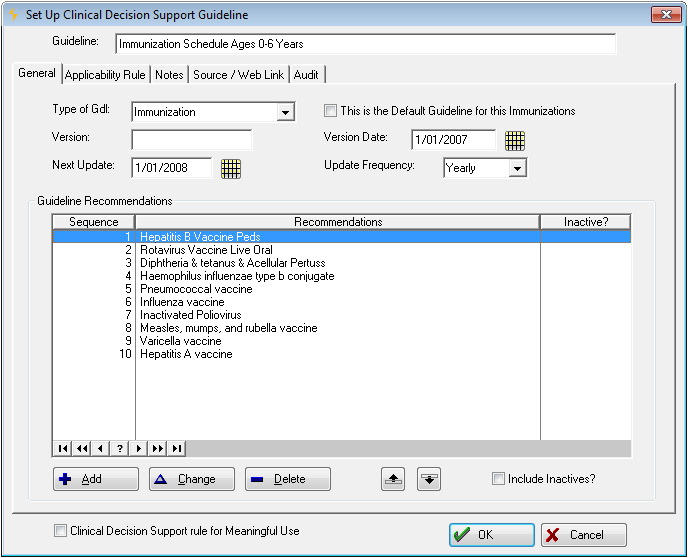
Since none of the individual recommendations applies to a child over 6, at the guideline level an Applicability Rule limits consideration of the guideline to children age 6 and younger. For all other patients, this saves the time it would take to evaluate all 10 recommendation individually.

The Recommendations
This recommendation has only one Recommended Action. In this case, as you can see, there is only one. Each recommendation can be limited to a more specific group within the criteria entered for the Guideline. On the specific recommendation for the Rotavirus, a Clinical Decision Support Rule excludes patients who have already received the immunization. The rule can be built from a set of demographic factors such as marital status, race and smoking status, and clinical criteria including whether the patient has or has not received a particular activity in the past, specific lab results, and specific vital signs. The single criterion entered below uses some obscure language to specify excluding patients who have already received the immunization. (Don't worry--you don't need to know how to write an expression like that. The Rule Builder walks you through it.)
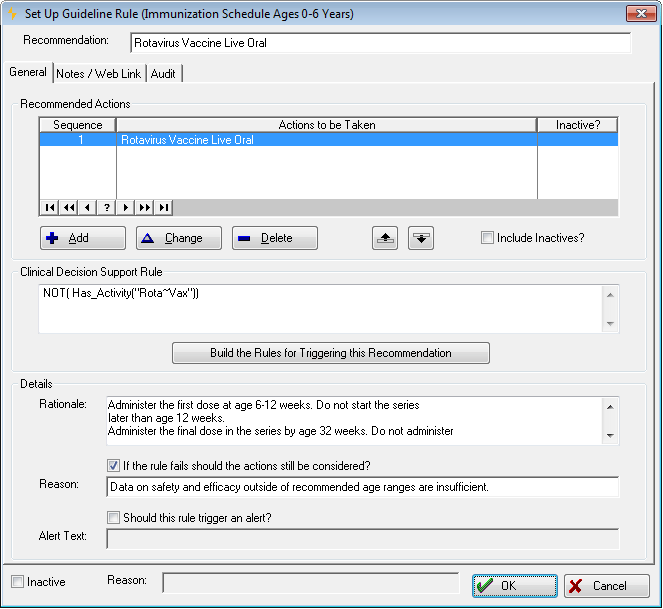
The Actions
The specific action indicates what is to be done: run a wizard, order a medication, or add a medical activity to the visit. In this example, the Rotavirus activity will be added. However, if there are multiple actions on a recommendation each can be applicable to different sets of patients. This action is to be taken only if the patient's age is at least 6 six weeks but not over 32 weeks.
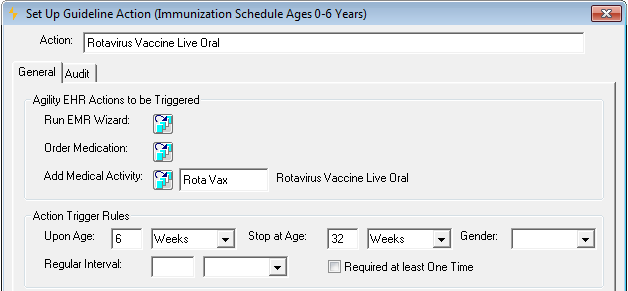
An action, if accepted at the time of the visit, displays the text for the Action and Rationale. It can also trigger the three types of action, entered above:
-
An EMR Wizard can be launched which can, of course, do anything wizards an do including inserting text into the visit charting note, creating a visit order, and adding one or more activities to the visit.
-
A medication order can be added to the visit.
-
A medical activity/charge (vaccination, test, etc.) can be added to the visit.
One or two or all three actions can be entered for a single action.
What Happens
When Net Health Employee Health and Occupational Medicine evaluates this guideline for a specific patient at the time of the visit:
-
If the patient is over 6 years old, evaluation will halt at the guideline level. Otherwise, each of the ten recommendations will be considered.
-
For the Rotavirus immunization recommendation, the patient will be considered only if the immunization has not already been administered.
-
Finally, the action will be applied only if the patient is in the indicated age range.
-
Other recommendations will be applied based on other criteria. For instance, the Hepatitis B immunization will be recommended for all patients older than 4 weeks. The Pneumococcal vaccine recommendation includes two actions, but only one will be applicable, based on the patient's age.
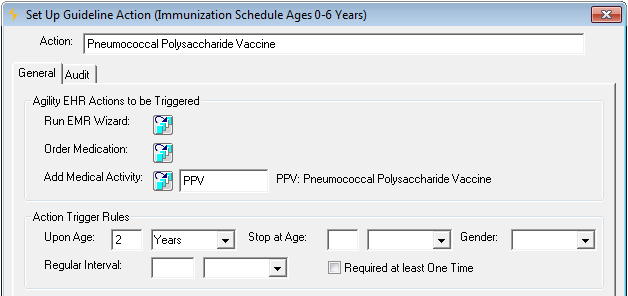
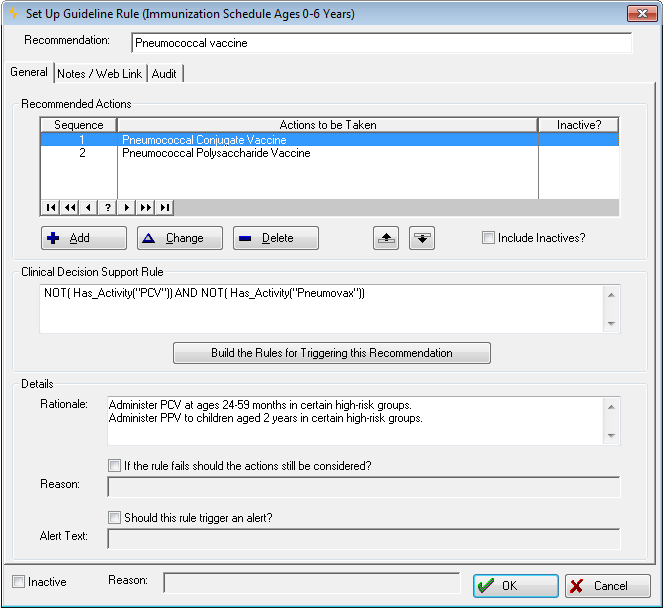
The criteria entered at the recommendation and action levels must, to be effective, fit within the criteria entered at the higher levels. Nothing would stop you from entering a Stop Age of eight years for an action on this guideline, but it would never be considered for children who are 7 or 8 because they have already been ruled out at the Guideline level.
Why So Complicated?
At this point, you might reasonably wonder why setting up a guideline is so complicated. Why have to enter criteria at three separate locations? Why not just enter them at one point and be done? We could have designed the system that way, but doing so would have resulted in your having to do a great deal more work. Had we done it that way, the ten immunizations on this one childhood immunizations guideline would then require ten different guidelines since they are needed at different ages and since each one is individually excluded if the patient has already received it. Likewise, it would not be possible to have multiple actions associated with a single guideline unless they applied under exactly the same circumstances. That is the trade-off: setup is more complicated, but it results in a lot less work. Our approach also results in superior organization. Instead of sorting through a much longer list of guidelines to find all the childhood immunizations, they are all included in one tidy package.